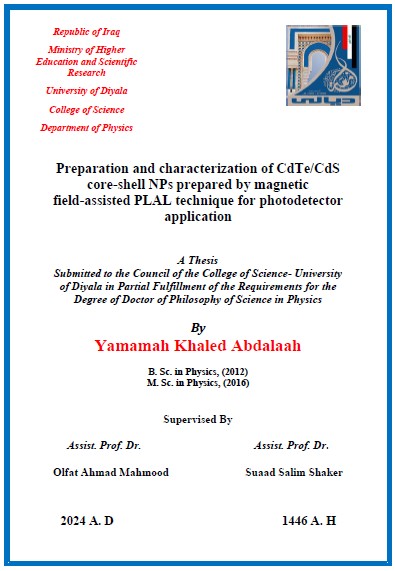Introduction
Nanotechnology is defined as the manipulation of matter with at least one dimension scaled between (1-100) nm, and concentrates on materials with length scales within the nanometer range [1]. When compared to more common bulk materials, atoms on their own have numerous desirable qualities. The exceptional, unique, and indispensable features of nano-size materials properties that are not found in bulk materials are what have attracted so much interest in these objects [2]. Nanomaterials can be classified according to dimensionality:
- Zero-dimensional: These nanomaterials have all three dimensions (x, y, and z) within the nanoscale range or are not dimensional outside the Nano metric range (>10 nm), include nanoparticles (NPs) and atomic clusters in a wide variety of shapes, including spheres, cubes, pentagons, rods, shells, ellipses, and more.
- One-dimensional: Nanomaterials in this class have two of their three dimensions (x, y) in the nanoscale range, but one dimension of the nanostructure is outside the non-metric range (>10 nm), include nanowires, nanorods, and nanotubes.
- Two-dimensional: 2D nanomaterials have plate-like shapes with two dimensions outside the nanometer range, but 1D (x) is at the nanoscale (between 1 and 100 nm), include films, multilayers, and super-lattices.
- Three-dimensional: 3D nanomaterials or bulk materials are nanomaterials that are not confined to the nanoscale in any dimension or dimension range. All dimensions of a 3D material are outside the nanometer range or greater than 100 nm, but the bulk material is made up of individual blocks that are in the nanometer scale (1–100 nm), so 3D nanomaterials have three arbitrary dimensions above 100 nm.
It includes nanoparticle dispersion, bundles of nanowires and nanotubes [3,4]. In nanoparticles, the increased proportion of atoms at the grain boundaries results in a larger specific volume (surface to volume ratio), which in turn results in novel optical, catalytic, and electrical properties [5]. Nanoparticles’ unique characteristics make them useful in a wide variety of nanotechnology applications, including nano-photonics devices, drug delivery, solar cells, catalysis, sensors, and nano-textiles [6]. Nanoparticles were synthesized using one of two techniques as shown in figure (1-1) [2, 7,8]:
- Top-down approaches, also known as dispersion approaches or laser ablation approaches, are typically connected with physical processing techniques and function by breaking the system down into smaller, more manageable pieces.
Bottom-up techniques, often known as reduction techniques, entail piecing together smaller components to build bigger systems. Chemical vapor deposition, electrochemical reduction, and sol-gel are only a few examples of chemistry and synthesis-related processes





